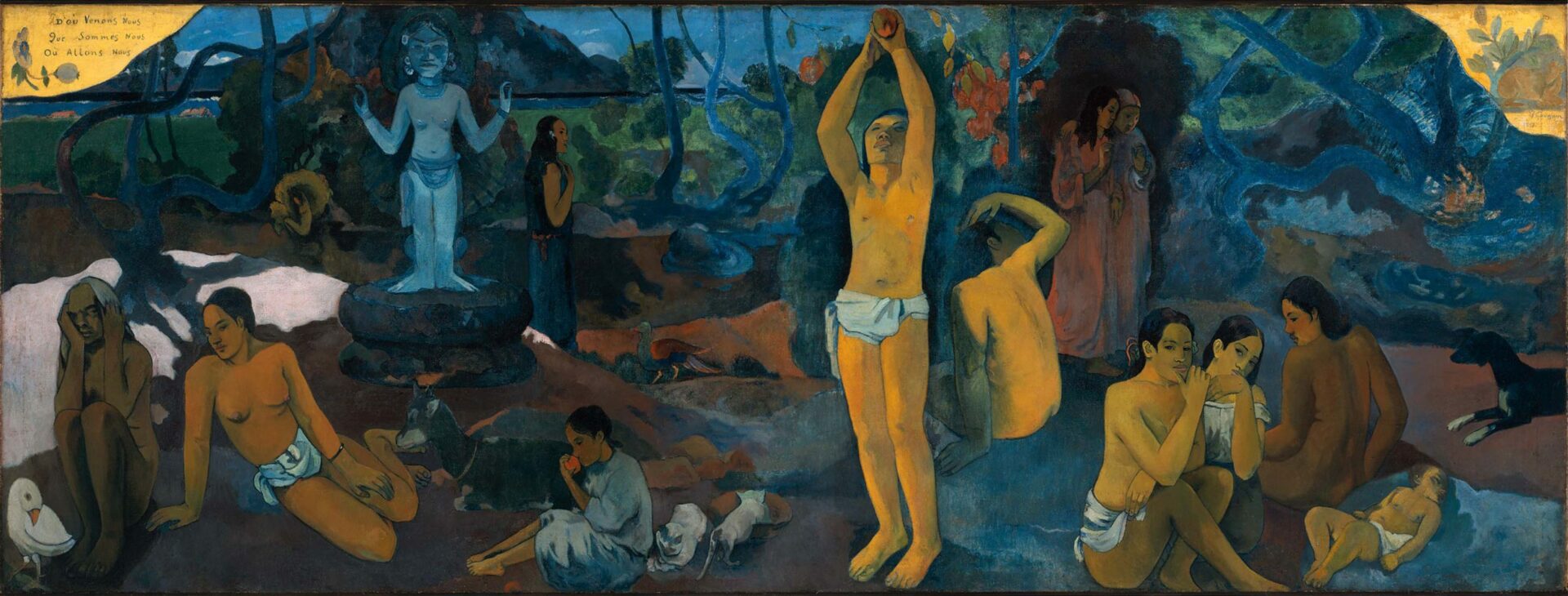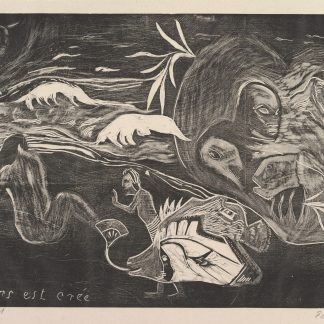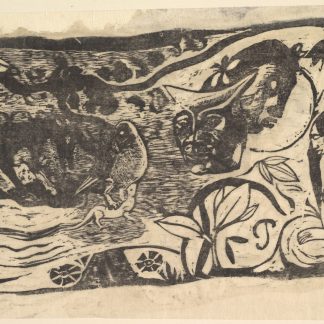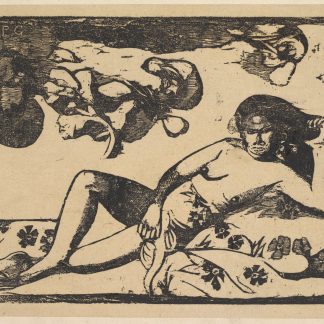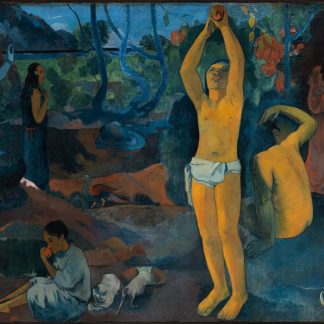Description
The painting’s title is taken from a book by the French philosopher and poet Paul Gauguin that explores the origins and meaning of human existence. In the painting, Gauguin seeks to visually explore these same questions, using a series of symbolic figures and images to create a narrative of life and death, birth and rebirth.
The left-hand side of the painting depicts three figures, each of which represents a different stage of life. At the bottom, a crouching figure represents birth, while a standing figure in the middle represents adulthood. At the top, an old woman is depicted, representing death. These figures are surrounded by a lush, tropical landscape, evoking Gauguin’s time spent in Tahiti, where he lived for many years and found inspiration for much of his art.
The central panel of the painting is dominated by a large, seated figure, whose arms are outstretched as if in a gesture of questioning or contemplation. This figure is often interpreted as a representation of the human soul or the divine, and its presence suggests a search for meaning and purpose in life. Surrounding the figure are a variety of animals, including a cat, a dog, and a lizard, each of which carries its own symbolic significance.
The right-hand side of the painting is perhaps the most mysterious and ambiguous, depicting a group of figures that are both human and animal. These hybrid creatures are engaged in a variety of activities, such as dancing, playing music, and caring for one another. They are situated in a barren landscape, which some interpret as a representation of the afterlife or a world beyond the physical realm.
Overall, “Where do we come from? What are we? Where are we going?” is a complex and multilayered work that defies easy interpretation. Gauguin’s use of symbolism and his bold, flattened style create a sense of otherworldliness and mystery, inviting viewers to reflect on the fundamental questions of human existence.
Despite its enigmatic nature, the painting has had a profound impact on the art world and continues to inspire artists and scholars today. Its bold use of color, flattened forms, and innovative composition make it a seminal work in the history of modern art, while its philosophical and spiritual themes speak to the deeper, universal aspects of human experience.
“Where do we come from? What are we? Where are we going?” is a complex and powerful work that showcases Gauguin’s unique style and philosophical outlook. Its mysterious and enigmatic imagery invites viewers to reflect on the fundamental questions of human existence, while its bold use of color and form make it a lasting masterpiece of modern art.


